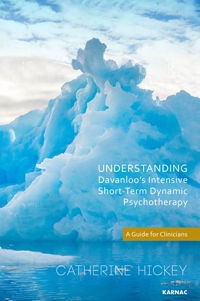Understanding Davanloo's Intensive Short-Term Dynamic Psychotherapy: A Guide for Clinicians

Book Details
- Publisher : Routledge
- Published : 2017
- Cover : Paperback
- Pages : 294
- Category :
Brief Psychotherapy - Category 2 :
Individual Psychotherapy - Catalogue No : 37968
- ISBN 13 : 9781782204015
- ISBN 10 : 1782204016
Customer Reviews
Our customers have given this title an average rating of 3 out of 5 from 6 review(s), add your own review for this title.
J. MacAllison on 29/04/2018 12:01:18




 (5 out of 5)
(5 out of 5)
There is nothing regrettable about pointing out the truth--that there are many clinicians who say that they are practising ISTDP with next to no training in it. Kudos to the author for being brave enough to point out this truth. She is not putting down the work of others. She is simply saying they need training to do this extremely precise and powerful work. This is about public safety and quality assurance. It's time to be honest about the state of the field.
Joan Fielding on 02/04/2018 23:20:28




 (1 out of 5)
(1 out of 5)
I have never seen a psychotherapy book so devaluing of other psychotherapists. If you have a model or method to offer, putting down others is not a compelling way of convincing people your approach is valuable. Beyond regrettable that this how the author is wanting her work to be seen.
Mark C. Vail on 05/12/2017 04:18:08




 (2 out of 5)
(2 out of 5)
I was hopeful, given what was released of the book prior to its publication and despite the devaluation of other therapists present in the articles that would make up part of this book, that there would be clinical contributions to the field of psychotherapy that would be novel, interesting, or generative. I maintained this optimistic stance throughout the duration of the book, finishing disappointed that the majority of the material was nothing that could not already be found in either other ISTDP texts or in the wealth of psychodynamic/psychoanalytic literature. While couched as a text for clinicians interested in learning the advancements Dr. Davanloo has made over more recent years, the book is often a protracted admonition towards therapists not practicing directly under Dr. Davanloo's supervision, a focused ad hominem attack on one particular therapist ("Dr. X") for the purposes of demonstrating writ large how practitioners functioning outside the Montreal group are clinically destructive, and an appropriation of the term transference neurosis to describe the perspective that "outsider" therapists are de facto rious to their patients health due to poor training and personal defect. It is fascinating that a book that attempts to interrogate and warn against the idealization of destructiveness would do so through the very means it seeks to condemn, namely devaluing other therapists and treatment modalities in ways I have never seen in a professional publication in this field or any other. The clinician who wrote this book is clearly dedicated and bright. Her overviews of some clinically important ISTDP and psychoanalytic concepts are good and worth review, and the importing of intergenerational transmission of psychopathology from psychoanalysis (and other many modalities) is both welcome and necessary. That her efforts have been disproportionately directed away from advancing clinically meaningful information that could benefit patients and towards an orchestrated attack on others in the field is disheartening. Personally, I would recommend a return to a Davanloo's original texts and the clinically informative books of Davanloo's other students for more a more clinically clear presentation of core ISTDP concepts. Having said this, the author shows promise as a writer and I will await any future publication
J. MacDougall on 12/06/2017 02:19:35




 (5 out of 5)
(5 out of 5)
This is a historical work documenting never before published interviews of Davanloo.
The author in no way idealizes Davanloo. Rather, she invites everyone to read the interviews and make their own judgements. Every new term is clearly defined and examples are given in the clinical vignettes. The prose is clear, structured and well crafted.
This is a must read for anyone who wishes to understand the brief dynamic therapies. It is a critically important read for anyone who wishes to truly understand the field of IS-TDP and the latest work of Davanloo.
I found this book to be excellent and would recommend it to all my colleagues and students.
E. Dalton on 21/05/2017 01:30:47




 (4 out of 5)
(4 out of 5)
This book has over 20 verbatim interviews with Davanloo as therapist. They occur in the last 5 years. Anyone who wants to learn more about Davanloo's work needs to start with his two text books and end with this one---. Otherwise, they will not see the totality of Davanloo's theories, discoveries, and techniques in action. It is not surprising that those who don't have the same knowledge and first hand training from Davanloo as this author does will attempt to devalue her work.
Erik Scott on 19/05/2017 06:59:19




 (1 out of 5)
(1 out of 5)
This book is clearly the Product of primitive idealization of the founder of ISTDP, as well as primitive devaluation of anyone who opposes his view. ISTDP is a very good therapy Method, but People who read this book will think of it as a weird cult. The Author refuses to define any of the terms she uses, and the book is a repetition of an unethical therapy where supervision, friendship and therapy is colluded without any ethical or clinical considerations. Our core training Group use this book as a definition of idealization and devaluation gone wrong.

